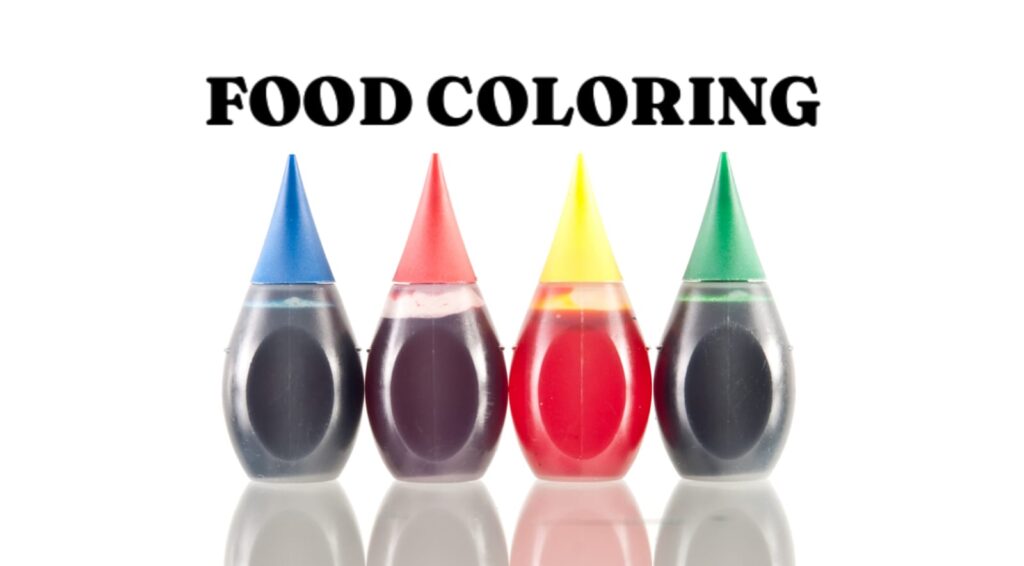Have you ever wondered how food coloring can transform an ordinary dish into something vibrant and eye-catching? What are the secrets behind its use, benefits, and potential risks? Food coloring is more than just an aesthetic addition; it plays a significant role in food preparation and presentation. In this comprehensive guide, we’ll uncover the essential secrets of food coloring, helping you understand its types, benefits, and safety considerations.
What Is Food Coloring?
Food coloring, also known as food dye, is a substance used to impart color to food and beverages. These dyes can be derived from natural sources or synthesized in a lab. The main purpose of food coloring is to enhance the visual appeal of food, but it also serves practical functions such as differentiating flavors and making products more attractive.
Food coloring comes in various forms, including liquids, gels, powders, and pastes. Each form has specific applications depending on the desired intensity and usage. For example, liquid food coloring is often used in baking and frosting, while gel colors are preferred for more vibrant and concentrated hues in candies and decorations.
Types of Food Coloring
Natural Food Coloring:
Derived from plant sources such as fruits, vegetables, and spices, natural food coloring is popular for its perceived health benefits and minimal processing. Common examples include beet juice for red, turmeric for yellow, and spirulina for green. Natural dyes are often used by those who prefer organic and eco-friendly options.
Synthetic Food Coloring:
Created through chemical processes, synthetic food colorings offer bright, consistent colors and are widely used in processed foods. Examples include Red 40, Yellow 5, and Blue 1. These dyes are known for their stability and intense pigmentation, making them a staple in the food industry.
Organic Food Coloring:
These are made from natural ingredients that are certified organic. They provide a middle ground between synthetic and natural dyes, combining the benefits of natural sourcing with the assurance of organic certification.
Each type of coloring has its unique attributes, and choosing the right one depends on factors like the desired color intensity, application, and dietary preferences.
Benefits of Food Coloring
Food coloring serves several beneficial purposes beyond simply making food look attractive. Here are some key benefits:
- Enhanced Visual Appeal: Food colorings can make dishes more appealing and appetizing. Vibrant colors can transform a simple dish into a festive or gourmet creation, capturing attention and stimulating appetite.
- Flavor Differentiation: Different colors help consumers identify flavors and ingredients more easily. For example, bright red may indicate strawberry or cherry, while green could signal mint or lime. This visual cue helps in distinguishing between different flavors.
- Brand Consistency: For manufacturers, coloring is crucial for maintaining brand consistency. It ensures that products look the same across different batches, which helps in building consumer trust and brand recognition.
- Creative Culinary Expression: Food colorings allow chefs and home cooks to experiment with colors and designs. It’s often used in baking, candy making, and decorating to add a personal touch and creative flair to culinary creations.
Safety and Regulations
The safety of coloring is a significant concern for both consumers and regulatory bodies. Here’s what you need to know about the safety and regulation of food dyes:
- Regulation and Approval: Food colorings, especially synthetic ones, are regulated by food safety authorities such as the U.S. Food and Drug Administration (FDA) and the European Food Safety Authority (EFSA). These agencies evaluate and approve dyes to ensure they are safe for consumption.
- Potential Allergies and Sensitivities: Some individuals may experience allergic reactions or sensitivities to certain food colorings, particularly synthetic ones. Symptoms can range from mild skin reactions to more severe allergic responses. It’s important to be aware of these potential issues, especially if you have known sensitivities or allergies.
- Natural vs. Synthetic: Natural food colorings are often preferred by those seeking to avoid synthetic chemicals. However, even natural dyes should be used with caution, as they can sometimes cause allergic reactions in sensitive individuals.
- Moderation is Key: While food colorings are generally considered safe when used within recommended limits, it’s important to use them in moderation. Excessive consumption of food dyes, particularly synthetic ones, may have potential health implications.
Conclusion
Food coloring plays a vital role in the food industry and home kitchens alike, offering numerous benefits from enhancing visual appeal to aiding flavor differentiation. Understanding the different types of food coloring, their benefits, and safety considerations can help you make informed choices in your culinary endeavors. What are your thoughts on using food coloring in your cooking? How do you balance aesthetics with health considerations?
FAQs
What are the main types of food coloring?
The main types of coloring include natural, synthetic, and organic. Natural colorings come from plant sources, synthetic colorings are chemically produced, and organic colorings are made from certified organic ingredients.
Are colorings safe to use?
Food colorings are generally safe when used according to regulatory guidelines. However, some individuals may experience allergies or sensitivities, especially to synthetic dyes. It’s important to use coloring in moderation and be aware of potential sensitivities.
How can I choose the right coloring for my recipe?
The choice of coloring depends on the desired color intensity, application, and dietary preferences. Natural colorings are often chosen for health reasons, while synthetic colorings provide vibrant and consistent hues.
What are the benefits of using Coloring?
Coloring enhances visual appeal, helps differentiate flavors, maintains brand consistency, and allows for creative culinary expression.







